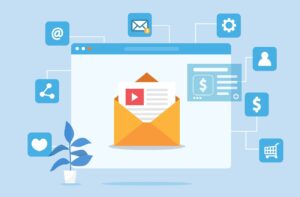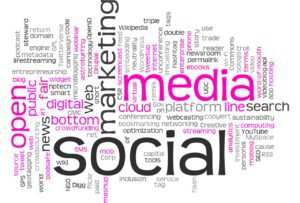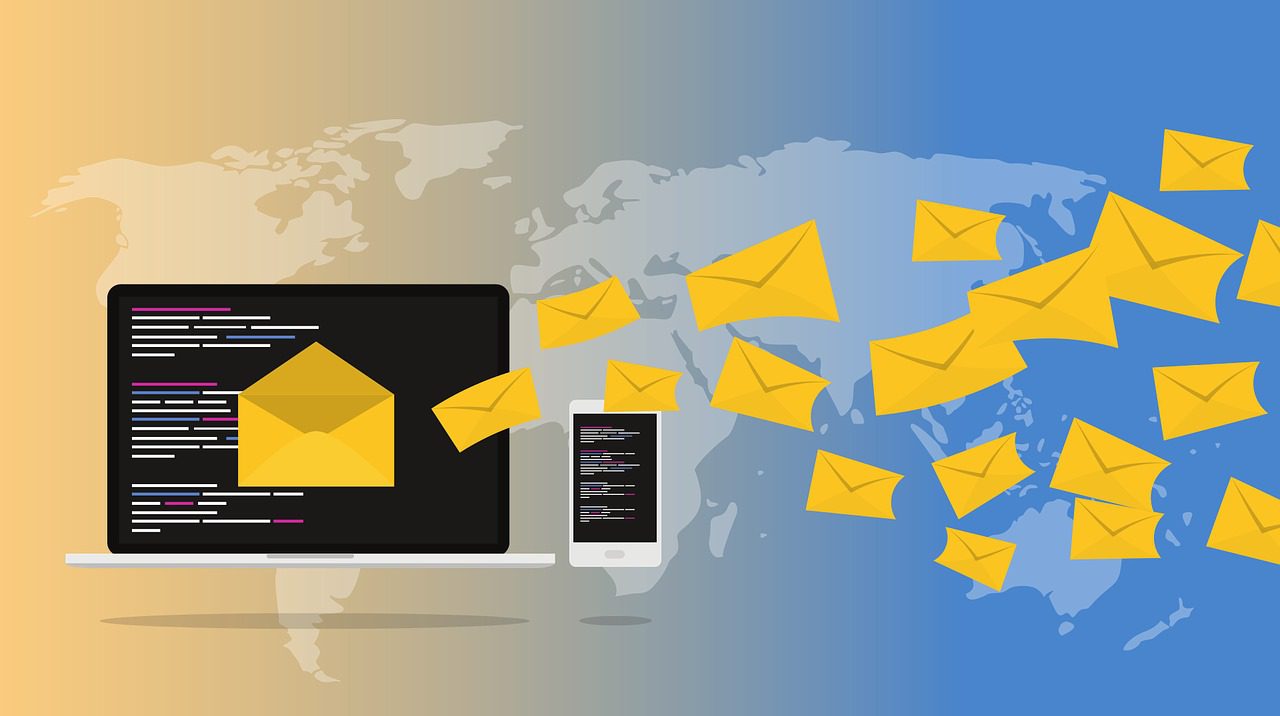Email marketing hasn’t gone extinct. It’s your covert tool. Learn How to Use It Here.
Let’s take a moment to break through the clutter. There is a steady barrage of information about the “next big thing” in digital marketing. Chatbots one day, a new algorithm on a social media site you’ve just mastered the next. Feeling like you’re pursuing a moving target is a common experience. One instrument has not only endured but flourished in the midst of all of this turmoil. When used properly, it’s dependable, adaptable, and immensely powerful—the digital marketing equivalent of a Swiss Army knife.
I am referring to email marketing.
And if you just wondered, “Email? “That’s kind of… old?” — stay with me. You’re going to learn why it’s the channel with the biggest return for the majority of companies, as well as how to quit spamming and begin creating a community that really wants to hear from you.Why, Despite DMs and Feeds, Email Is Still the Best Before moving on to the “how,” let’s make sure we understand the “why.” The figures are honest.
Unbeatable ROI: You can anticipate an average return of $36 for every $1 you spend on email marketing. Give the name of another channel that is comparable.
Your List Is Your Own: Your Facebook page likes and Instagram followers are part of the platforms. Platforms lose popularity, users are suspended, and algorithms are updated. Your list of emails? Your digital real estate is that. You have complete power over it.
It’s Direct and Personal: A personal email arrives in a personal inbox. It’s a handwritten note in someone’s mailbox, not a billboard on a busy highway. That closeness is invaluable.
It Encourages Action: Email is very effective in persuading people to do a particular, quantifiable action, whether they are reading a blog piece, looking at a deal, or attending a webinar. The bottom line? People use email, which is why email marketing is effective. They get updates, receipts, and critical information from companies they really care about there. Becoming one of those brands is your aim.
Establishing Your Base: The Email List
Without recipients, sending emails is impossible. However, the way you construct your list is more important than its size. 50,000 disengaged members who forget they signed up is much less useful than a tiny, active list of 500 brand advocates. Put an end to buying lists. Simply stop. This cannot be negotiated. Buying lists is a certain way to be flagged as spam, damage your sender reputation, and accomplish nothing at all. It’s all about permission.
The Bribe: The Enchantment of the Lead Magnet
A “sign up for our newsletter” option is no longer sufficient. People must have a strong incentive to give you their valuable email address. A free, worthwhile piece of material provided in return for an email is known as a lead magnet.
Effective Lead Magnets Resolve an Issue: Consider discount codes, brief eBooks, checklists, templates, cheat sheets, or video instruction. It must be both specific and irresistible. “Our Newsletter” lacks specificity. The book “The 5-Day Guide to a Clutter-Free Kitchen” is detailed and guarantees a certain result.
Post Sign-Up Forms Throughout :
Don’t be timid. Add opt-in forms to the bottom of your website, the “About” page, the sidebar of your blog, and—above all—use a pop-up (a thoughtful, well-timed one!). A blog post’s conclusion is a fantastic opportunity—”Did you like this post? Receive more advice like this straight to your inbox.
Creating Emails That People Will Want to Read
This is the science and art of it. An unread email is a lost chance. Here’s a way to get beyond the clutter.
1. Be recognizable as the “From” name
Frequently, this is more significant than the subject line. “Sarah from [Your Company]” is an example of a consistent combination of your own name, brand name, or both. When an email comes from someone they know and trust, people are more inclined to open it.
2. The Gatekeeper as the Subject Line
You’ve got around three seconds to leave an impression. Either express a benefit, pique interest, or convey a feeling of urgency in your subject line.
Do: Ask a question, hint at a secret, use emojis sparingly, and keep it brief (40–50 characters for mobile). Avoid using all capitals, using terms like “FREE!” or “BUY NOW!!!” or being deceptive (this erodes credibility).
3. Your Secret Weapon: The Preheader Text
In most email applications, it is the brief passage that follows the subject line. It is excellent real estate! “View this email in your browser…” is a waste of time. Make use of it to elaborate on your subject line and provide more motivation for readers to click “open.”
4. The Body: Provide Value, Each and Every Time It is your responsibility to keep their interest when they open it. Give up using business jargon and write like a human. Write as if you were speaking to a single person. Be talkative, amiable, and supportive.
There is no negotiating mobile-first: On a phone, more than 60% of emails are opened. You’ve lost if your email is a wall of text that is difficult to read on a tiny screen. Make use of large, tappable buttons, single-column layouts, and brief text.
The Objective is a Click: A Call to Action (CTA), or main objective, should be included in every email. What are you hoping they’ll do? Have you read the blog post? Take advantage of the sale? Tell you anything in return? Make the link or button obvious, appealing, and simple to locate. Using your brand’s colors and typography is important for aesthetics. Although many clients automatically block pictures, don’t depend solely on them. Without them, the text should still make sense.
Beyond the Blast: The Influence of Automation and Segmentation
Sending the same email to your whole list repeatedly is known as a “blast.” It also has the feel of one. Email customization is the way of the future, and segmentation and automation are the means by which this is accomplished.

Stop Talking to Strangers: Segmentation
Just breaking up your email list into smaller groups according to predetermined standards is known as segmentation. This enables you to deliver more conversion-friendly, hyper-relevant information.
Segmenting may be done by:
Demographics: Gender, age, and location.
Action: Which links did they click? Have they left their shopping cart behind? Did they buy a certain item?
Engagement: Who reads your emails every time? In six months, who hasn’t opened one?
In what stage of the customer journey are they? Are they brand-new members? A devoted client?
For instance, you might send a group of people an email with things that are comparable to what they have previously purchased, and you could send new subscribers an email with your best-selling items, rather than sending out a “Everything Must Go!” sale email to everyone.
Automation: Configuring and (Nearly) Ignoring It
Email marketing transforms from a chore to a powerhouse via automation. These are emails that are sent out in response to a user’s activity or at a certain moment.
Important automated email sequences consist of:
This is your first impression of the Welcome Series! A series of one to three emails that present your brand narrative, offer the lead magnet, and establish expectations for the recipient.
For leads who aren’t prepared to make a purchase, use the nurture sequence. This series gives them useful information, fosters confidence, and gradually persuades them to buy. “Hey, you forgot something!” is a series about cart abandonment. Perhaps the most lucrative email series is this one. A little reminder, sometimes accompanied by an image of the abandoned item, may make up a significant portion of lost revenue.
Post-Purchase Series: A “thank you” email, a review request, or suggestions for related items. This promotes repeat business and fosters loyalty.

The Golden Rule: Don’t Just Make Noise, Give Something of Value
Everything is tied together by one thread. Consider this before you click “send” on each email: “What’s in it for my subscriber?”
Are you teaching them?
Are you amusing them?
Are you offering them something they will really value?
Are you in any way improving or simplifying their lives?
If the response isn’t a resounding “yes,” don’t send it. The inboxes of your subscribers are holy. They will give you their attention, their trust, and eventually their business if you respect that space. Shouting into a megaphone is not the goal of email marketing. It’s about striking up a discussion. One inbox at a time, it’s about creating a community. And that’s a capability worth investing in in the busy digital world of today.
